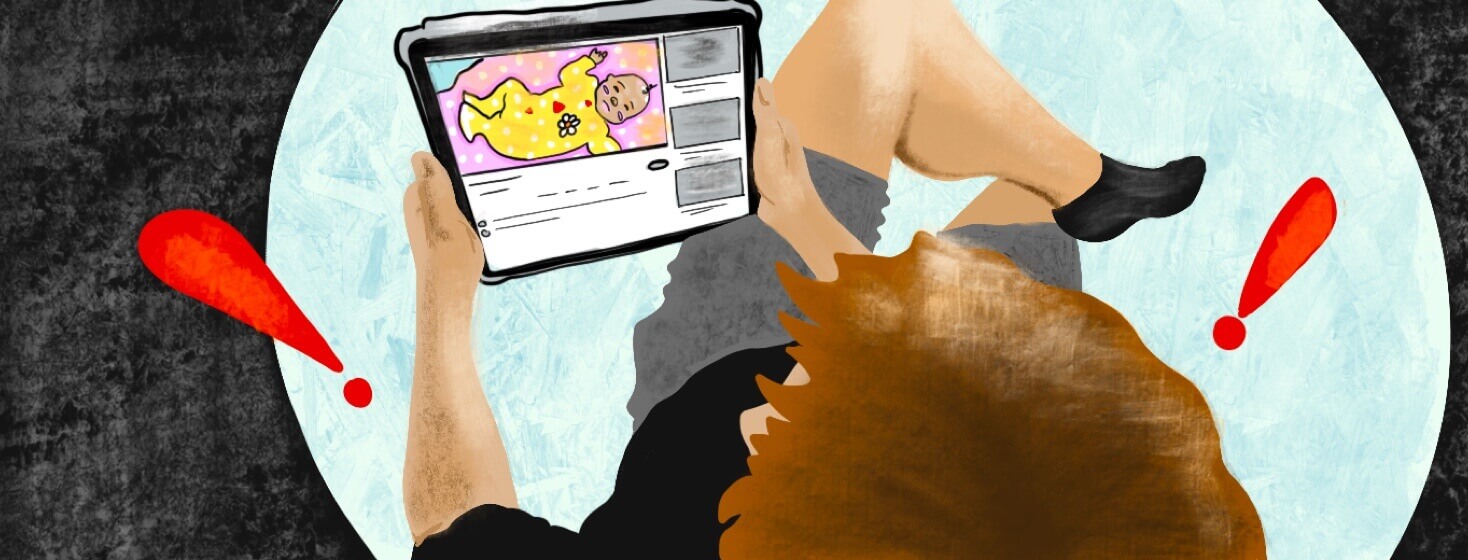Little Seizures, Big Consequences: Recognizing Signs of Infantile Spasms
Prior to August 2020, I knew very little about epilepsy. What I did know came from movies and TV shows. I pictured full-body shaking, eyes rolling back, grand mal seizures. I thought the biggest inconvenience was the potential inability to drive. I thought medications could control them. The truth is, I gave very little thought to epilepsy. That all came crashing down the moment my daughter started having "odd movements."
Beginning signs of infantile spasms
In late August of 2020, my 6-month-old daughter, Juniper, started having strange movements throughout the day. They were subtle at first, barely noticeable. At her 6-month check-up, I didn't even think to bring it up with her pediatrician. I wasn't a first-time mom. I knew babies did weird things.
"Maybe it's reflux," I said to my husband.
Unfortunately, it wasn't long before the movements became impossible to ignore. It as clearly not reflux. Juniper's arms would jerk up, her torso would crunch down, her head would dip slightly, and she'd let out a small gasp.
"Are we being paranoid?" I thought to myself as we drove to the local emergency room.
A missed diagnosis
"I'm not sure what it is," an attending physician said as he examined our baby, "but I don't think it's something you should worry about."
He discharged us after a few hours and told us to contact a neurologist "at some point," but there wasn't a rush.
What do infantile spasms look like?
"Look at this!" my husband shouted after we arrived home.
He pulled up a video on his phone and I watched a baby with the exact same movements as our daughter; arms jerking, gasp, slight head drop.
Infantile spasms.
An epilepsy diagnosis
The baby in the video had infantile spasms (or West syndrome). As I furiously Googled, everything I read contradicted what the ER doctor had just told us. Words like "catastrophic," "emergency," and "urgent" flashed on the screen in front of me. We immediately packed a bag and drove an hour to the closest children's hospital.
Juniper was admitted without hesitation and hooked up to an EEG. It wasn't long before the attending neurologist confirmed our fears. Our 6-month old daughter had a rare and catastrophic form of epilepsy called infantile spasms.
Little seizures, big consequences
Infantile spasms impacts about 1 in every 2,000 children each year. Each movement we were seeing was actually a tiny seizure, and Juniper was having hundreds a day.
In addition to seizures, her background brain activity presented in a pattern called hypsarrhythmia. Think of this as static on a radio. It's hard to comprehend the story because the static keeps interrupting the message. Additionally, each seizure was as if her brain was "rebooting" like a computer. Shutting down, then starting back up.
The phrase "little seizures, big consequences" is often used to describe infantile spasms. The seizures look harmless compared to what I had always pictured seizures looking like. However, with her brain so cluttered with chaos, Juniper would struggle to develop because she wouldn't be able to encode anything she was experiencing around her.
Developmental delays with infantile spasms
Additionally, spasms often evolve into other seizure types which can be life-threatening. Global development delays including physical and cognitive disabilities are incredibly common.
The outcome of West syndrome on children largely depends on how they respond to treatment and the underlying cause of the seizures. Epilepsy is a symptom of something else: genetic variations, metabolic syndromes, a traumatic brain injury, or brain malformations.
The importance of awareness
Two years later, and we are still battling multiple clusters of infantile spasms every single day. When I think back to those initial days of diagnosis I still find myself angry at the multiple doctors that did not take us seriously. I am blown away by how few medical professionals are aware of this debilitating disease.
This is why I continue to advocate and share my daughter's story. I never want a child to be turned away when they are in need of urgent care or a parent to feel like they are being paranoid.
Capturing seizures on video
If you think your child may have infantile spasms or be having some other type of seizure, try to capture it on video. This is essential when trying to get a diagnosis, especially if the seizures are infrequent or are unable to be captured on an EEG.
Additionally, go to a children's hospital whenever possible. Hospitals that specialize in pediatrics are much more aware of what epilepsy can look like in a child than hospitals that do not specialize in pediatrics.
Finally, trust your gut. Never feel like you are being paranoid. What sent us to the second emergency room was not a doctor, but rather, a YouTube video and our gut instinct as parents that something was seriously wrong with our daughter.

Join the conversation